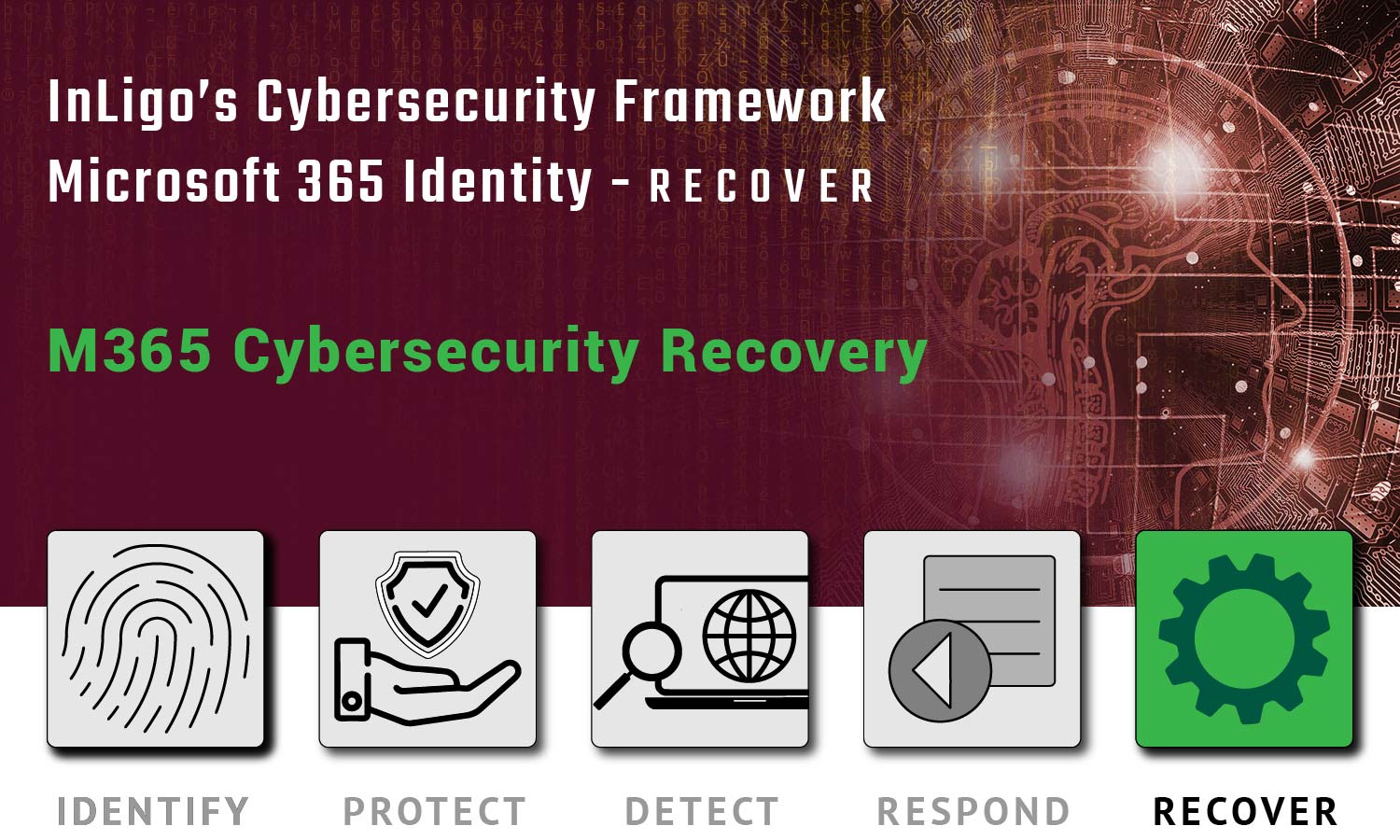
Microsoft 365 Cybersecurity Recovery: InLigo’s Guidelines and Solutions to Enhance Your Security Posture.
Microsoft 365 cybersecurity recovery refers to the process of restoring an organization’s systems and data following a security incident. This may involve steps such as:
- Identifying the root cause of the incident: This involves analyzing the incident to determine what caused it and how it occurred.
- Implementing corrective actions: This involves taking steps to fix the root cause of the incident and prevent similar incidents from occurring in the future.
- Restoring systems and data: This may involve restoring data from backups or rebuilding systems that have been compromised.
- Communicating with stakeholders: This may involve updating key stakeholders like management, employees, and customers on the recovery process’ status.
- Reviewing and updating the organization’s cybersecurity posture: This may involve reviewing the organization’s current cybersecurity posture and making recommendations for improvement.
Overall, the goal of Microsoft 365 cyber security recovery is to minimize the impact of a security incident on the organization and restore systems and data as quickly and effectively as possible.
WHAT IS YOUR SECURITY SCORE?
Recovery Planning
Develop and implement appropriate activities to maintain plans resilience and to restore any capabilities or services that were impaired due to a cybersecurity incident.
InLigo’s Discovery Questions
- What processes are in place to respond to a security incident?
- Do these processes cover containment, evidence gathering, and remediation?
- Who is responsible for coordinating the recovery process?
- Is there a clear chain of command for this process?
- What tools and resources are available to assist with the recovery process?
- Do these resources include backup and recovery tools, incident response tools, and cybersecurity expertise?
- How will the organization communicate with stakeholders during the recovery process?
- Do you have a plan in place for communicating with employees, customers, and other relevant parties?
- What steps will be taken to prevent similar incidents from occurring in the future?
- Will this include updating policies and procedures, implementing new technologies or providing additional training for employees?
- How will the organization assess the impact of the incident and determine whether the recovery process was successful?
- Will this include analyzing data such as downtime or data loss?
Overall, these discovery questions can help organizations to identify strengths and areas for improvement in their Microsoft 365 cyber security recovery process and ensure that they are prepared to effectively respond to and recover from a security incident.
Action Items
- Identify the scope of the incident: This includes determining the extent of the security incident and identifying which systems and data may be affected.
- Assess the impact of the incident: This involves determining the potential impact of the incident on the organization’s operations and business objectives.
- Implement containment measures: This includes taking steps to contain the incident and prevent it from spreading, such as isolating affected systems or disabling access to certain resources.
- Gather and analyze evidence: This involves collecting and analyzing evidence related to the incident, including logs and other relevant data.
- Communicate with stakeholders: This includes updating key stakeholders such as management, employees, and customers on the incident’s status and any steps being taken to address it.
- Restore affected systems and data: This includes taking steps to restore affected systems and data to their pre-incident state.
- Implement corrective actions: This includes taking steps to fix the root cause of the incident and prevent similar incidents from occurring in the future.
- Review and update the recovery plan: This involves reviewing the recovery plan and updating it as needed based on lessons learned from the incident.

